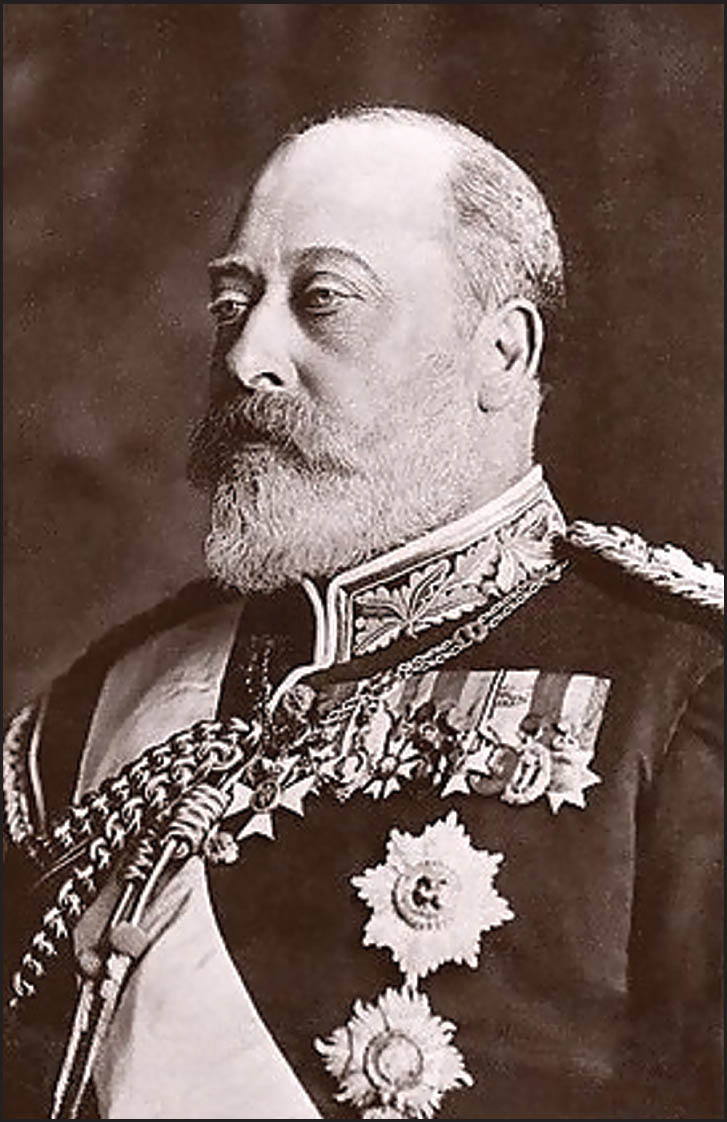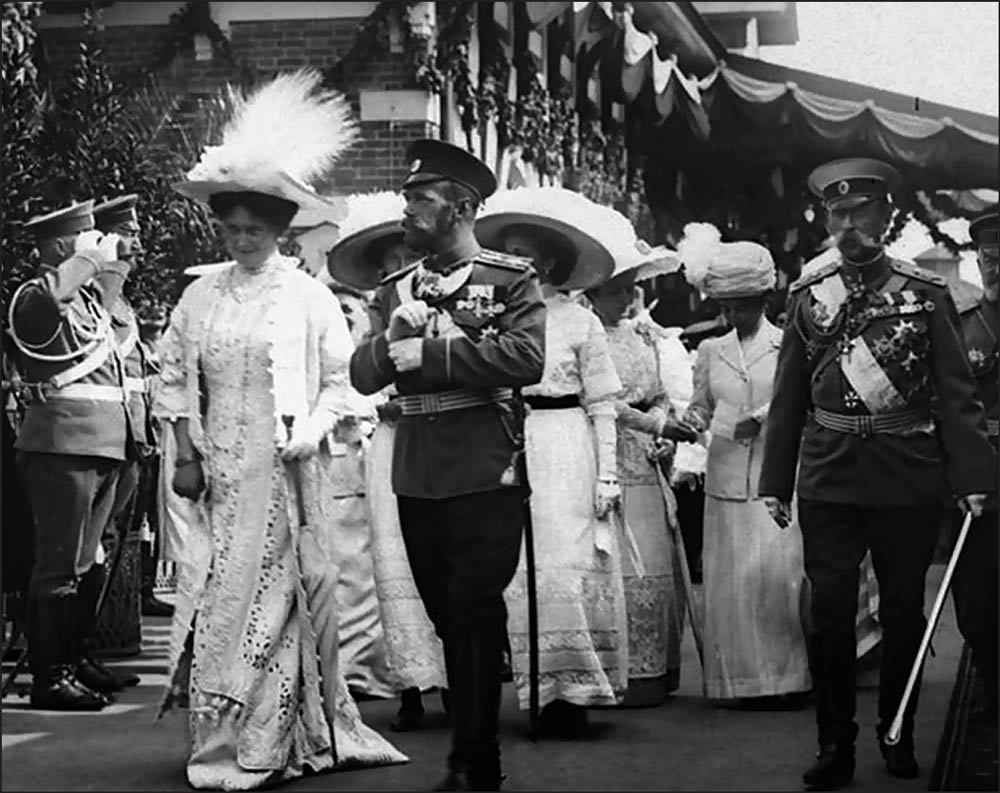

The twentieth century had arrived and the dour and seemingly indestructible Queen Victoria finally departed this world in 1901 – to be reunited with her beloved Albert. Few sovereigns had come to the throne with lower expectations than Edward had, as he saluted the crowd from his splendid black horse at his mother’s funeral. The Edwardian era that was to follow, described by some as the ‘last hurrah’ of Empire, was a distinct, different and certainly very memorable niche in the history of the United Kingdom and, by association, numerous other countries around the world – certainly as far as fashion was concerned. Things were lightening up, although those in high social and fashionable circles can have had little idea of what was going on in the world of birds!
Victoria, who had become something of a recluse after Albert’s death, had many times despaired of her eldest son and heir Edward, born in 1841 and known as ‘Bertie’, for his many indiscretions, wayward behaviour and an undoubted talent for scandalising society. The ageing queen was terrified that he was becoming something of a throwback to the wayward Hanovarians. Indeed, some modern psychologists assess Bertie as having what is known today as Attention Deficit Disorder. In her mind, and indeed others in court circles, the portly boy was significantly lax, had gone off the rails with horse racing, gambling and, of course, the ladies, and was not up to the job of taking over from her. Basically, people did not take him seriously and he was regarded as something of a playboy and philanderer. But having waited nearly sixty years to get to the summit, our man had become somewhat bored with his lot; his nickname of ‘Edward the Caresser’ was probably pretty well deserved, as the portly Prince commenced upon his historical legacy with (alleged) liaisons with the likes of Jenny Churchill (Winston’s mother), Lillie Langtry, and Lady Daisy Brooke – the future Countess of Warwick et al. Some sources at the time put the figure at over fifty known affairs, resulting at one point in the celebrated court case that questioned his involvement with a certain Lady Harriet Mordaunt, and a child (his?) born out of wedlock, which resulted in the unfortunate lady being committed to a lunatic asylum for the rest of her days. But, whatever the truth of the matter, Edward, with the Establishment closing ranks around him, contrived to get away with it.
Across the Channel, Paris – the ‘City of Light’ – where the citizens had at first been hostile towards Edward, was won over by his charm and in return offered him many ‘attractions’, including performers such as Sarah Bernhardt and Louise Weber, who used the name La Goulue (The Glutton). The city became a great magnet for ‘Eddy’ as he paid numerous visits to houses of ill repute and particularly the famous brothel – ‘Le Chabanais’, the well known ‘maison de tolerance’. But looking back, let’s not forget that the Parisian courtesans of that era were also great patrons of the fashion world and Edward would have undoubtedly encountered many of them on his visits. The top courtesans had to look good for the class of client whom they sought to attract and for those ‘ladies’ of easy virtue who had made it to the top so to speak – ‘Les Grandes Horizontals’ as they were known – money for fashion was certainly not in short supply. Three of the most famous – ‘Les Grandes Trois’ – Emilienne d’Alençon, the very beautiful Liane de Pougy and Caroline Otero (known as La Belle Otero) could, on occasion, be seen in the vicinity of the Bois de Boulogne and other fashionable locations, sporting beautiful, large, feather bedecked hats as they went about their business cementing their social contacts with their clients!
Further east, in affluent Berlin, contemporary film footage shows the city crammed with elegant ladies everywhere, sporting their up to date feathered creations. Whether just strolling the fashionable spots, curtseying before the likes of the Kaiser or Hindenberg at society events, or simply ‘being seen’ in the many outdoor cafes around such places as the Brandenburg Gate, the fraus and fraulines gave pride of place to their hats. And very elegant they were too.
Further east still, the fashion for large hats had even permeated through to the somewhat insulated, though incredibly opulent, court of the Russian royal family. Despite the family’s almost convent-like existence, one can often stumble across photographs of Czar Nicholas with his wife Alexandra and their four daughters, Olga, Tatiana, Maria and Anastasia, sporting large feathered hat creations (particularly on one official visit to Romania), at various state or social functions in the years leading up to their murder by the Bolshevics at Yekaterinburg in July 1918.
And yet, back in England, despite all his perceived faults, Edward turned out to be a relatively good king. He had a sort of magical touch – the ‘common touch’ if you like, and his reign pretty much confounded those who had predicted that he would be a complete disaster. Seen everywhere, Edward was going to do it his way and he loved every minute of it. The new king, a forward-looking man, believed that the Crown should move with the times. He welcomed anything new, he even learned to ride a bicycle and took up golf, which must have been something of a sight to see. Unsurprisingly, people quickly took to him and he surprised many with his diplomatic skills. He was certainly a sort of ‘loose cannon’ in today’s terms and as we look back, we can see that his accession heralded an era of rapid social change, which somehow contrived to free up what had been a rigid and formal society under his mother’s stewardship. Fashion in particular, started to reflect this new-found freedom and creativity, certainly within the realm of ladies’ hats, which became increasingly bigger during the first ten years of the twentieth century.

King Edward VII – the ‘Playboy King’ and despair of his mother Queen Victoria.

The Russian Czar and his entourage arrive at Borodino railway station in 1912 to celebrate the original ‘Battle of Borodino’ 100 years earlier. Notice the profusion of large feathered hats on show. (Image: The Boris Yeltsin Library, St Petersburg, Russia.)